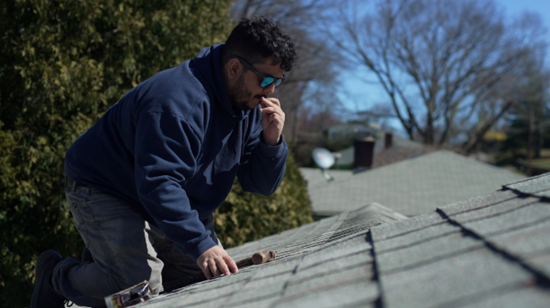Highlights
The best time to replace a roof depends on weather, material type, and contractor availability.
Spring and fall generally offer the ideal balance of temperature and conditions for roof installation.
Summer provides longer daylight hours but may bring heat-related challenges for workers and materials.
Winter roofing is possible in some regions using cold-weather adhesives and flexible materials.
Planning ahead helps homeowners secure competitive pricing and scheduling flexibility with reputable contractors.
Seasonal Factors That Affect Roof Replacement
Roof replacement is one of the most significant investments a homeowner makes, and timing plays a key role in its success. Different seasons present unique advantages and challenges depending on location, roofing material, and contractor availability. The goal is to schedule your project when weather conditions allow proper material adhesion, safe working conditions, and efficient installation. While modern roofing materials are designed to handle a wide range of temperatures, extreme heat, cold, or humidity can still affect performance and curing times. According to Johns Manville, adhesive peel strength decreases significantly at lower application temperatures (below 40 °F), which can lead to blisters or delamination if materials are installed too cold. Understanding how each season influences installation helps you make the best decision for your budget and long-term durability.
Spring: The Season of Renewal
Spring is widely considered one of the best times to replace a roof. After the harsh conditions of winter, many homeowners discover leaks, missing shingles, or damage caused by ice and wind. Spring temperatures—typically between 45°F and 75°F in most regions—allow asphalt shingles, adhesives, and sealants to set properly without becoming brittle or overly soft. Roofing contractors also have more availability during early spring before the peak summer rush begins. Additionally, mild conditions make it easier for crews to work efficiently without heat-related safety concerns. Scheduling your roof replacement in spring ensures your home is prepared for heavy rainstorms and the heat of summer.
Summer: Longer Days, Faster Installations
Summer offers the advantage of extended daylight hours, allowing contractors to complete larger roofing projects in fewer days. Warm temperatures also help shingles form a strong bond with underlayment and flashing components. However, extreme summer heat—especially in southern or desert climates—can make installation more difficult. Asphalt shingles become more pliable, increasing the risk of scuffing if handled improperly. Roofing crews must take frequent breaks to prevent overheating, which can extend project timelines. The key to successful summer roofing is scheduling work during early morning or late afternoon hours when temperatures are moderate. For homeowners in mild climates, summer remains a convenient and efficient season for replacement.
Fall: The Ideal Window for Most Roof Replacements
Many professionals consider fall the optimal season for roof replacement. Temperatures are cool but not cold, humidity levels are lower, and weather tends to be more predictable. These conditions allow adhesives to cure evenly and shingles to seal securely before winter arrives. Completing a roof replacement in the fall provides peace of mind, knowing your home is protected from snow, ice, and freezing temperatures in the months ahead. In addition, roofing companies are often less busy after the summer surge, which can make scheduling easier and even reduce labor costs. Because of its stability and ideal weather balance, fall remains the most recommended time for homeowners nationwide to replace aging roofs.
Winter: Specialized Options for Cold-Weather Roofing
Although winter may seem like the least favorable time for roof replacement, advancements in materials and installation techniques have expanded what’s possible. Certain cold-weather adhesives and synthetic underlayments allow roofing contractors to complete projects safely even in lower temperatures. However, extreme cold—typically below 40°F—can make shingles stiff and prone to cracking, especially asphalt-based products. Metal roofing and single-ply membrane systems, such as TPO or PVC, perform better in cold conditions and are often used for winter installations. While snow or ice may cause delays, homeowners in warmer climates can benefit from shorter wait times and off-season pricing during the winter months.
Regional Climate Considerations
Local climate has a major influence on the best time for roof replacement. In northern states, spring and early fall are ideal to avoid snow and ice accumulation. Southern regions may prefer late fall or early winter to avoid intense summer heat. Coastal areas must account for humidity and storm season, while dry inland zones experience wide temperature swings that affect material expansion and contraction. Roofing materials also behave differently depending on local weather patterns. For example, metal roofing excels in snowy or windy regions, while reflective membranes are popular in hot climates. Consulting with a local roofing professional ensures that your installation timing aligns with both regional weather and manufacturer specifications.
Material-Specific Timing Tips
Different roofing materials respond to temperature and humidity in unique ways. Asphalt shingles require moderate temperatures for proper adhesion and sealing, typically between 50°F and 85°F. Metal roofing can be installed almost year-round but expands and contracts more in extreme temperatures. Clay and concrete tiles should be installed during dry seasons to prevent cracking during curing. Flat roofing systems, such as modified bitumen or EPDM, rely on temperature-sensitive adhesives that perform best in spring and fall. Understanding how your chosen material behaves helps prevent future issues such as blistering, leaks, or premature wear.
Scheduling and Contractor Availability
Timing your roof replacement also depends on contractor demand. Spring and summer are peak seasons for roofing work, which means higher prices and longer scheduling delays. Booking early—ideally several months in advance—ensures access to reputable contractors and more flexible scheduling options. Some homeowners intentionally choose late fall or winter to take advantage of off-season discounts. However, these savings should always be balanced with potential weather-related delays. A professional roofer will inspect your existing roof, recommend the best timeline, and coordinate material delivery around weather forecasts to minimize disruptions.
Preparing Your Home for Replacement
Regardless of the season, proper preparation ensures a smoother roof replacement process. Clear your driveway and yard to allow access for equipment and debris removal. Protect valuables in the attic from dust or vibration, and discuss ventilation or insulation improvements with your contractor. If trees overhang your roof, schedule trimming in advance to prevent interference with work. Most importantly, stay in communication with your roofing team regarding weather forecasts and project milestones. Proactive planning reduces delays and protects your investment from unexpected issues during installation.
Long-Term Benefits of Proper Timing
Choosing the right season for roof replacement does more than simplify installation—it affects long-term performance. A roof installed under stable, moderate conditions will seal properly, resist weather damage, and last longer. By scheduling work during optimal temperatures, homeowners can avoid costly issues such as warped shingles, adhesive failure, or trapped moisture. Roofing contractors also perform better when weather is predictable, leading to higher-quality craftsmanship. Ultimately, understanding seasonal patterns allows homeowners to plan strategically, balancing cost, convenience, and durability for lasting value.
While roofing can be done year-round with the right preparation and materials, spring and fall remain the most favorable seasons for most homeowners. These periods offer ideal temperatures for installation, fewer weather-related interruptions, and competitive contractor availability. Regardless of when you choose to replace your roof, work with a licensed and insured professional who understands your region’s climate and manufacturer guidelines. By planning ahead and choosing the right timing, you can maximize the life of your roof and protect your home’s structural integrity for decades to come.







